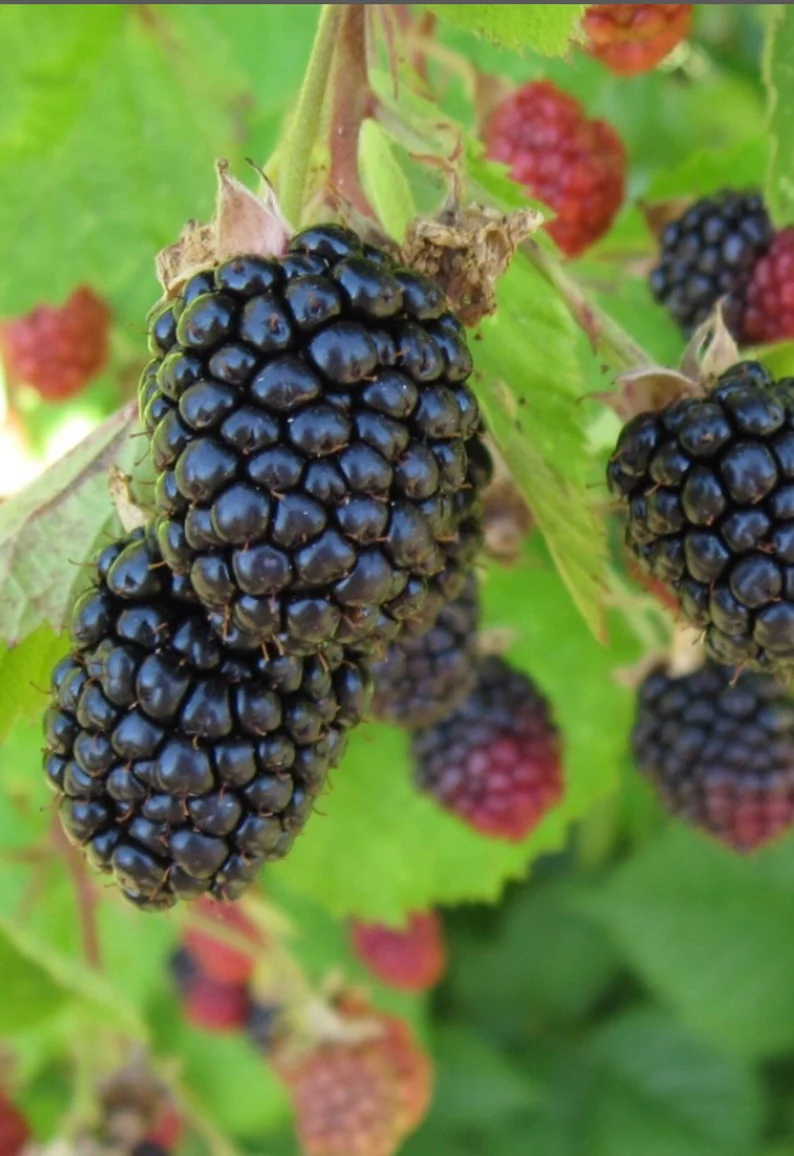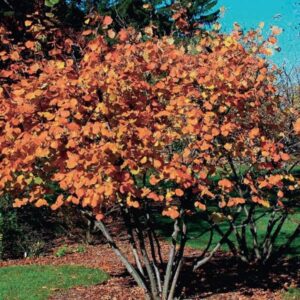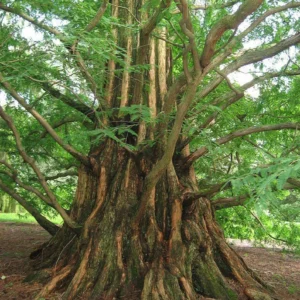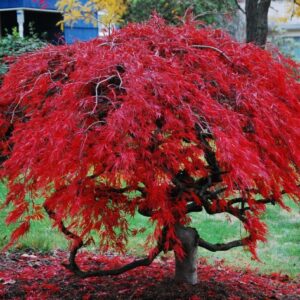Description
Blackberry Tree – 1 Yr Old Seedling (Rubus fruticosus)
Overview
The Blackberry tree (Rubus fruticosus) is a popular fruit-bearing shrub known for its sweet, dark purple to black berries. A fast-growing perennial, the Blackberry tree produces an abundant crop of delicious fruit each summer. This 1-year-old seedling is perfect for home gardeners looking to grow fresh, homegrown blackberries for pies, jams, and fresh eating. Blackberry trees are easy to care for and can thrive in a variety of conditions, making them a great addition to any garden or orchard.
Blackberry Tree Native Range
Native to Europe, North America, and parts of Asia, Blackberry trees thrive in a variety of climates, particularly in regions with full sun and well-drained soils.
Growth and Form
- Height: Grows approximately 12–24 inches per year, reaching 3–6 feet at maturity.
- Spread: Blackberry trees spread 4–6 feet at maturity.
- Growth Rate: Fast-growing, producing fruit within the first 1–2 years after planting.
- Foliage: Dark green, compound leaves with serrated edges, which provide a lush background for the fruit.
- Flowers: White or pink flowers bloom in late spring, leading to a bounty of blackberries in the summer.
Ecological Benefits
- Wildlife Habitat: Blackberry trees are attractive to pollinators, particularly bees, and the berries are a food source for birds and small mammals.
- Soil Health: Blackberry trees help to prevent soil erosion with their dense root systems, making them valuable for garden and orchard environments.
Blackberry Tree Hardiness and Climate Tolerance
- Hardiness Zones: 5–9, making it suitable for a variety of temperate climates.
- Cold Tolerance: Hardy to approximately -20°F (-29°C), with proper care.
- Drought Tolerance: Blackberry trees are moderately drought-tolerant once established but benefit from consistent watering.
- Soil Preferences: Prefers well-drained, slightly acidic to neutral soils, though they are adaptable to a variety of soil types.
Planting and Care
- Planting Location: Blackberry trees need full sun for best fruit production but can tolerate partial shade. Plant in areas with good air circulation and plenty of space to spread.
- Watering: Keep the soil evenly moist, especially during the first few years. Once established, the tree is more drought-tolerant but will still benefit from consistent watering.
- Fertilization: A balanced, slow-release fertilizer applied in early spring can promote strong growth.
- Pruning: Prune after harvest to remove spent canes and maintain air circulation. Blackberry trees also benefit from occasional thinning to promote better fruiting.
Uses
- Culinary: The berries are perfect for fresh eating, jams, jellies, pies, smoothies, and desserts.
- Wildlife: The berries attract birds and small animals, making Blackberry trees an excellent choice for wildlife gardens.
Potential Problems
- Pests and Diseases: Blackberry trees may be susceptible to pests such as aphids, Japanese beetles, and raspberry borers. Regular monitoring and good garden hygiene can reduce these risks.
- Pruning Needs: Blackberry trees require regular pruning to maintain health and productivity. Prune old or dead canes to promote new growth and improve fruit yield.






Reviews
There are no reviews yet.